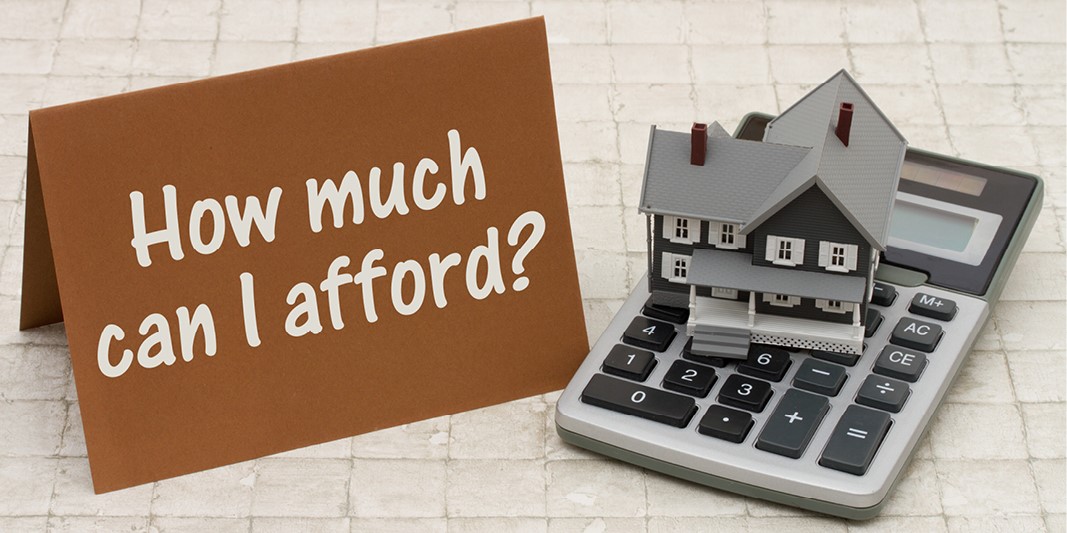Buying Your First Home in the Greater Oklahoma City Area

Whether you’re interested in buying a home in Oklahoma City, in the surrounding suburbs, or in a rural location outside of town, Central Oklahoma is one of the best places to live in the Midwest. While many young potential homebuyers are being priced out of other cities, with an overall cost of living that’s 15% below the national average, Oklahoma City remains remarkably affordable. In fact, the average price for a home in Oklahoma City is still under $200,000—a steal when you consider the main benefits of living there, from the low commute times and free park and ride public transit, to its nationally-recognized schools. And if you’re looking to move a little farther out, communities like Edmond offer homes with room to grow, as well as prices that still fall well below the national average.
If you’re reading this post, you probably have already decided that the Greater Oklahoma City region is right for you, but maybe you’re not exactly sure how to begin the process of buying your first home. Buying a home can be intimidating, and there are many possible missteps that are easy to make if you dive in too fast. In this post we’ll help you avoid some common first-time home buying pitfalls, and give you some basic advice on how to prepare for buying a home, from determining how much you can afford to choosing the right loan. Keep reading to learn more!
A change of perspective.
Before you begin your search, it’s important to make sure your perspective is in line with the reality of purchasing your first home. Your first home is a place you will make memories, learn basic home improvement and maintenance skills, and is usually considered a steppingstone to a larger home—this is where the term ‘starter home’ comes from. It’s important not to buy something that is more than you need and above your means because you are fixated on its investment potential or finding the perfect ‘forever home’.
Instead, focus on finding the home that is right for you both now and in the near future. Larger and more expensive homes may check every single box for you, and may lead to larger returns when you go to sell, but these benefits could easily be outweighed. For instance, even if a particular property has everything you ever wanted in a home, having higher mortgage payments, utility, tax, and insurance bills, as well as higher maintenance costs, can leave you stretched so thin that it takes away from your financial wellbeing. You’ll have less money to spend on other pleasures like vacations or nights out with friends, higher debt, and more money-related stresses. In fact, according to Consumer Affairs, more than 2 out of 3 Americans consider themselves ‘house poor,’ with half of homeowners feeling that “homeownership is more difficult than it should be.” All those extra costs are not only an avoidable financial burden, but they also take away from your investment potential when you eventually go to sell your home.

How much house can I afford?
With that reality check in mind, let’s talk about how much home you can comfortably afford. There are some general rules, like keeping your total housing expenses below 30% of your income, though these guidelines don’t necessarily consider every single financial situation. And when you are calculating your total housing costs, you also need to leave room for utilities and home maintenance—not just your mortgage payment. If possible, keeping your total monthly mortgage payment to 25% of your income might be a safer financial bet. Things to include in that calculation are principal, interest, insurance, private mortgage insurance and HOA fees if applicable. Sticking to this formula leaves you ample room for maintenance and saving for other things in your life, including your children’s education funds and your retirement accounts.
The figures mentioned above are general rules, but your lender does have a firm cutoff for the amount of loan you will be able to qualify for—for most mortgages, your debt-to-income ratio shouldn’t be higher than 43%. That means that no more than 43% of your before-tax income can be taken up by your debts, including car, student loan, and credit card payments, in addition to your mortgage. And depending on your credit score and income, your lender might prefer less. There is a little bit of flexibility for first time homebuyers, though. In fact, FHA loans (more on these below) can sometimes accept a DTI of over 50%, if the conditions are right.

Two ways to increase the amount of home you can afford
In order to qualify for a larger home loan, the best thing you can do is reduce your debt-to-income ratio. You can do that in two ways: by reducing your current debts or by reducing the amount of the loan for your desired home.
- Pay off existing debt. Having fewer debt payments like a student loan or a vehicle loan payments, means more of your income can go towards your home, and less goes toward your debts. For instance, if you are nearing the end of your car payments, or have credit card balances that are eating up your monthly income, it might make sense to use some of your savings to pay them off. If you can’t pay off your existing student loan debt entirely, you may want to look into an Income-Driven Repayment Plan, which can also reduce those monthly payments.
- Save for a larger down payment. Putting 20% down means you don’t pay private mortgage insurance (PMI), which can cost anywhere from .58% to 1.86% of your loan each year. This reduction means that more of your income can go to your actual mortgage payment, increasing what you qualify for. Additionally, putting more down can get you a lower interest rate, further lowering those payments. And lastly, the more you put up front for your home, the lower your total loan amount—and of course, those monthly payments—will be. While you’re saving for your down payment, consider getting a certificate of deposit (CD), which will earn higher interest rates than traditional savings accounts.
F&M Bank Mortgage has tons of great resources about applying for your mortgage, as well as a calculator to help estimate monthly payments and determine the size loan you can comfortably afford. If you have any questions, or when you're ready to apply, contact one of our mortgage experts and they will help guide you through the process.

Should you buy a home right now?
Increasing housing costs and mortgage interest rates may seem like insurmountable hurdles to first-time homebuyers, but that doesn’t mean that you shouldn’t buy a home. Everyone’s individual situation and financial picture is different, and your choice to buy a home should be based on more than national trends.
If you’re concerned about affordability, residents would be well-served by focusing on our local market, which has not seen quite the level of price increases as other corners of the country. With an average home price of $150,000, Forbes Home lists Oklahoma as the 9th most affordable state for housing in the country.
If you are looking into buying a home and considering if the time is right for you, here are some things you should do to help you make your decision:
- Determine how much home you can afford (see above).
- Look at the local market and see what kind of homes you can get for your budget. Compare your options to your current rental (and keep in mind, rents can go up).
- Speak with a real estate agent to see if they have any suggestions for up and coming neighborhoods or affordable alternatives to single family homes, if your budget isn’t going as far as you’d like.
- Remember, your first home should be one that fulfills your current needs. Be willing to make concessions to find a good fit that matches your budget.
Lastly, if the current mortgage rates are worrying you, remember that, should rates go down, you can always refinance your home loan.

What special programs are available for first-time homebuyers in Oklahoma?
Lenders and agencies understand that purchasing your first home can be a big undertaking. Unlike current homeowners, you won’t have the equity in an existing home to use toward your new one. And, if you’re just starting out, your income and credit score might not be working in your favor. Because of these factors, there are a number of special programs for first-time homebuyers.
FHA Loans
Loans offered by your bank in partnership with the Federal Housing Authority, FHA loans are often used by first-time homebuyers due to their lower down payment requirements: only 3.5% if your credit score is 580 or higher, or 10% if your credit score falls between 500 and 579. These loans require special inspections and appraisals, above and beyond typical lender requirements, which means you may not be able to snag that fixer upper. Additionally, you will be required to pay a mortgage insurance premium (MIP) for the life of the loan. But these loans help more than a million individuals and families each year achieve their dreams of homeownership. And consider that, even if your home loan costs are slightly higher with an FHA loan, unlike rent, your monthly payment will never go up. For many first-time homebuyers, FHA loans are the answer.
VA Loans
If you or your spouse is a current or former member of the armed services, you may qualify for a VA Loan. These loans, offered by your bank but backed by the U.S. Department of Veterans Affairs, provide special terms for eligible borrowers. They don’t require a down payment (though you are welcome to have one!), have no private mortgage insurance, and have flexible credit requirements, plus limited closing costs. To determine if you qualify, check out their eligibility criteria.
USDA Rural Development Loans
While homes in areas with higher populations are disqualified for this program, much of Oklahoma, including homes in Guthrie, Crescent, and Kingfisher, falls within the eligibility map for USDA Rural Development Guaranteed Loans. Since they are backed by the USDA, these loans can offer up to 100% financing (no down payment), and often have more flexible income and credit score requirements than conventional home loans, making them ideal for first-time homebuyers. USDA home loans also offer low interest rates, though do charge a small annual fee, in lieu of mortgage insurance.
Fixed Rate Mortgages
If you don’t qualify for VA or USDA loans but are able to swing a more substantial down payment than is needed for an FHA loan, a conventional fixed rate mortgage might be the right choice for you. In exchange for competitive interest rates, they have stricter lending criteria (usually a credit score of at least 620), and higher down payment requirements than government-backed loans. They also have fewer hoops to jump through to get to closing, which can be appealing to sellers. Although you aren’t required to put down 20%, lenders prefer sizable down payments—if you don’t hit that number, you will be required to pay a monthly private mortgage insurance fee, as we mentioned above.
Adjustable-Rate Mortgages
Adjustable-rate mortgages (ARMs) often start with a lower interest rate, which makes them especially appealing to buyers in a time of higher rates. However, the rate will change (adjust) over the life of the loan, going up—or down—depending on current market conditions. ARMs can also be useful for first-time homebuyers for another reason. Since rates often have a 5 to 10 year period where they are locked in, if you plan to sell your starter home before then, you could be taking advantage of lower monthly payments, saving you thousands of dollars in the meantime. If you decide to stay in your home, there’s also the possibility of refinancing if your new rate isn’t ideal. Ultimately, because of the risk of your monthly payments rising to become unaffordable, it’s important to talk to your lender to determine if an adjustable-rate mortgage makes sense for you.

How much money do you need to buy a house?
How much cash you’ll need for your home depends on a number of factors including the cost of the home, the kind of mortgage you’re getting, and your credit score. Let’s break down a few scenarios to see what you might expect to pay.
Buying a Starter Home in Oklahoma City with an FHA Loan
In our scenario, let’s consider a young woman looking to buy her first home in the city. She has a little bit saved from her job, is trying to keep their costs as low as possible, and has already started house hunting in Oklahoma City. Here’s an estimate of what she may pay*:
Cost of Home: $200,000
Interest Rate: 4.875%
Closing Costs: $3,750
Prepaid Expenses: $3,250
Down Payment (3.5%): $7,000
Cash Required to close: $14,000
Principal & Interest: $1,050
Hazard Insurance: $160
Mortgage Insurance Premium: $160
Real Estate Tax: $200
Monthly Payment: $1,550
*Cost, fees and rates are approximate.
Does this scenario sound like you? Want a more detailed breakdown? Reach out to one of our experienced mortgage lenders at F&M to get a better idea of what your costs may be.

Ready to buy?
Buying a home is a complex process, one that most people only do a few times in their lifetime. The first time you buy a house, it might feel overwhelming. You’ll have dozens of decisions and calculations to make, and that’s before you even decide on which home to put in an offer for!
At F&M Bank we know the local real estate market and can work with your agent to help you get an affordable loan for your first home. Not sure where to begin? A great first step is getting preapproved for a loan. Getting preapproved will not only eliminate much of the financial guesswork, but it can also give you an advantage when it comes time to put in an offer. Call or visit one of our local branches to speak to a lender and get started today!
